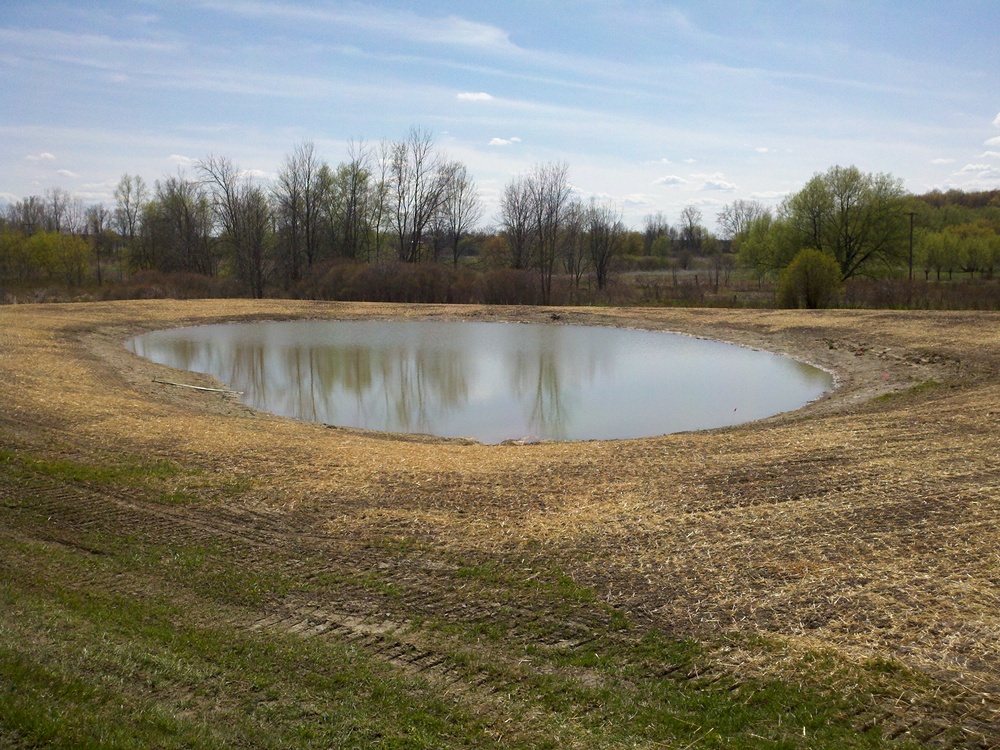Welcome - Spend some time here reading, learning and asking questions. A good place to start is looking through the Common Q&A Archives-
http://forums.pondboss.com/ubbthreads.php?ubb=postlist&Board=22&page=1Firstly - do not believe that catfish (CC) keep the pond clean. If they did there wouldn't be any gunky ponds. There are lots of gunky ponds with catfish in them. Actually, the more CC are in a pond the gunkier the water becomes. CC are basically predators, night time predators and eat a lot of fish-invertebrates, NOT dead plants decaying on the pond bottom. A 5 lb CC probably eats more fish than a 5 lb bass or at least just as many fish.
Rule #1. Nutrients are what makes a pond 'dirty' - depending how you define dirty. Clean pristine waters have very low nutrient inputs and very little plant growth in the lake due to LOW nutrients,thus clear water. Nutrients grow plants and dead plants decay in the pond to crate muck. Offending plants, including leaves, can blow in, wash in, or grow in the pond. IT IS THE JOB OF PONDS & LAKES TO ACCUMULATE NUTRIENTS. That is a natural process. On the positive side more nutrients result in more and larger fish. Clean pond low nutrients; more nutrients, murky water more fish: two opposite ends of the goal spectrum for a pond. The more you want both extremes to occur the harder it becomes to achieve both, especially as the pond ages and collects more nutrients.
Rule #2. Plan to aerate the pond. Bottom aeration generally best. Aeration helps to better manage nutrients and maintain overall better water quality in a water body.
Rule #3. Feeding the fish grows more fish and more bigger fish. Feeding fish adds nutrients. Decide which is more important. Fish can be fed by adding: A. forage fish, B. adding fish pellets, or C. by the fish eating what grows within the pond system. Some use all three methods to grow the most fish and biggest fish.
Rule #4. Plants growing in the pond purify the water. They extract nutrients from the water for growth putting those absorbed chemicals into plant biomass. Plants are nutrient vacuum cleaners. Some of those bound foods/nutrients result in fish growth/ biomass. Definately some plants are better for ponds than others. Generally choose plants that do not become rampant or troublesome, at least more trouble than you are willing to invest. Some plants spread slow, grow shorter, and grow more in shallow water. As in planting a garden, do your plant homework.
Rule #5. Plants dying in the pond, pollute the pond by putting - releasing nutrients back into the pond. Removing plants (harveting) removes nutrients from the system.
Rule #6. Decide what type of fishery you want. If you want to eat fish from the pond. Study and plan for it. There are numerous combinations of fish that you can have in a MI pond.
Rule #7. Ponds that have the fewest fish species are easier to manage so all fish THRIVE. Thrive means not just live but live, live long, grow well, reproduce and maintain a balance of various size classes. No one group is over populated.
Rule #8. Smallmouth bass (SMB) do not thrive with largemouth LMB)in pond habitats. Decide on one not both. Yellow perch (YP) do not thrive real well with bluegill (BG). Generally BG-LMB and YP-SMB are preferred combinations. Many other fish combinations are possible if extra management is provided.
Rule #9. Stock forage fish first allow them to grow and multiply. Then when populations are thriving add sport fish.
Rule #10. Manage your fish. Fish grow and multilpy. They often 'out grow' the space and the 'internally manufactured' food supply. To maintain a "proper" balance, harvest your fish as you would harvest a garden. There are many different ways to harvest and manage depending on your GOALS for your fishery.
